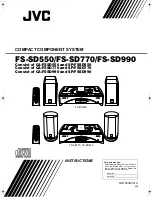
The asterisk (
*
) in the prompt indicates that there are more than 4 characters in the cluster
name. To display the complete object name in any context, use the
context
command:
eqcli cl-myc*> context
The current context is: ‘mycluster’
eqcli cl-myc*>
In each context, you can perform operations on the objects and parameters that exist in that
context (e.g., create, delete, modify, display, set). When you change to another context, the eqcli
prompt changes to include the suffix indicated in the chart above for each context. For example,
when you change to the server context, the eqcli prompt changes from “
eqcli
>” to “
eqcli
sv>
”.
Within each context shown above, you can also type in the name of an object (existing or new) to
enter an object specific context that will allow you to edit only that object’s settings.
So, for example, you can start eqcli and type
server
to change to the server context -- as indicated
by the prompt, which changes to “
eqcli sv>
”. Now, you can use the
list
command to list all the
existing servers. If you then type in the name of one of the existing servers while in the server
context, you will enter the server specific context for that existing server -- the prompt changes
to “
eqcli sv-server_name>
” to indicate that you are in the server specific context for the
server with the name
server_name
. You could also do this directly from the global context by
typing:
eqcli > show
server
eqcli > sv-
server_name
show
Note that the eqcli prompt reserves only four characters for object names. So, for example, if you
have a server named
sv02
, the entire server name will be displayed in the prompt, as shown in
this example:
eqcli >
server sv02
eqcli sv-sv02>
If the object name is longer than four characters, eqcli displays the first three characters and an
asterisk (*) to show that the name is longer than four characters. For example, if you have a
server named
Server2
, the prompt will look as follows when you change to the
Server2
specific
context:
eqcli >
server Server2
eqcli sv-Ser*>
The complete current context can always be displayed using the context command, as in this
example:
Copyright © 2014 Coyote Point Systems, A Subsidiary of Fortinet, Inc.
All Rights Reserved.
145
Equalizer Administration Guide
Summary of Contents for Equalizer GX Series
Page 18: ......
Page 32: ...Overview 32 Copyright 2014 Coyote Point Systems A Subsidiary of Fortinet Inc ...
Page 42: ......
Page 52: ......
Page 64: ......
Page 72: ......
Page 76: ......
Page 228: ......
Page 238: ......
Page 476: ......
Page 492: ......
Page 530: ......
Page 614: ......
Page 626: ......
Page 638: ......
Page 678: ......
Page 732: ...Using SNMP Traps 732 Copyright 2014 Coyote Point Systems A Subsidiary of Fortinet Inc ...
Page 754: ......
Page 790: ......
Page 804: ......
Page 842: ......
Page 866: ......
















































